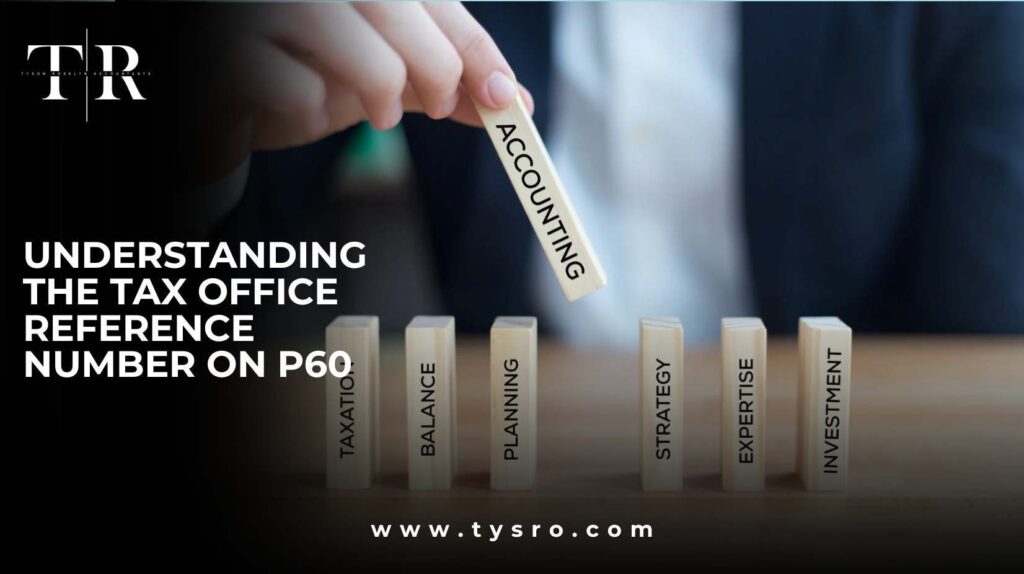When it comes to the UK tax system, things can often seem complicated, especially if you’re not used to dealing with taxes on a regular basis. One element that frequently causes confusion is the Understanding the Tax Office Reference Number on P60 A Complete Guide This article will break down everything you need to know about this important number in clear, simple terms. We’ll even throw in a few anecdotes to make it all more relatable!
What is a P60?
Before diving into the Tax Office Reference Number, it’s essential to understand what a P60 is. The P60 is an annual statement provided by your employer after the end of the tax year (which runs from April 6th to April 5th of the following year). It details your income and the amount of tax you’ve paid over the year.
Imagine Sarah, a schoolteacher who just received her P60 in the post. She’s been working all year, and now she has this official piece of paper that tells her how much she’s earned and how much tax she’s paid. But what catches her eye is this mysterious Tax Office Reference Number. What does it mean, and why should she care?
The Importance and Understanding the Tax Office Reference Number on P60 A Complete Guide
The Tax Office Reference Number on your P60 is essentially an identifier used by HM Revenue and Customs (HMRC) to keep track of your employer’s tax affairs. Every company in the UK that employs staff has a unique Tax Office Reference Number. This number is crucial because it ties the tax you’ve paid throughout the year directly to your employer’s records.
For Sarah, understanding this number is important if she ever needs to discuss her taxes with HMRC. If there’s a mistake in her tax code or if she needs to claim a tax refund, the Tax Office Reference Number helps ensure she’s connected to the right employer’s records.
Where to Find the Tax Office Reference Number on Your P60
Understanding the Tax Office Reference Number on P60 A Complete Guide Finding the Tax Office Reference Number on your P60 is straightforward, but it’s helpful to know exactly where to look. Typically, you’ll find it near the top of the P60 form, often labeled as “Employer’s PAYE Reference.” This is the number you’ll need if you’re corresponding with HMRC about any tax issues.
Understanding the Tax Office Reference Number on P60 A Complete Guide Let’s say Sarah is reviewing her P60 and she notices a discrepancy in her tax calculations. The first thing she should do is locate her Tax Office Reference Number on the form. With this number, she can confidently contact HMRC and reference her employer’s records, making it easier for the tax office to assist her.
Why the Tax Office Reference Number Matters
The Tax Office Reference Number plays a critical role in various tax-related processes:
- Tax Refunds: If you’ve overpaid tax during the year, the Tax Office Reference Number will be required to process any tax refund.
- Tax Code Issues: Sometimes, tax codes are incorrect. The Tax Office Reference Number helps connect your query to the correct employer, ensuring the issue is resolved more quickly.
- Employment Verification: When switching jobs or applying for loans or mortgages, this reference number might be used to verify your employment and tax history.
Sarah, for instance, might find herself needing a tax refund after discovering she was on the wrong tax code for part of the year. Without the Tax Office Reference Number, sorting out the issue with HMRC could take much longer.
How to Use the Tax Office Reference Number
Understanding the Tax Office Reference Number on P60 A Complete Guide Using the Tax Office Reference Number isn’t something you do every day, but when the time comes, knowing how to use it can save you a lot of hassle. Here’s a simple step-by-step guide:
- Locate the Number on Your P60: As mentioned, the Tax Office Reference Number is usually found at the top of your P60 form, labeled as “Employer’s PAYE Reference.”
- Contact HMRC: If you have any tax-related queries, contact HMRC by phone or online. When prompted, provide them with your Tax Office Reference Number.
- Provide Relevant Information: You’ll also need to provide personal details and possibly your National Insurance number, but the Tax Office Reference Number is what ties your query directly to your employer.
- Follow Up: After providing the necessary information, follow up on your case if needed. Having the Tax Office Reference Number ready ensures that any follow-up communication is efficient and straightforward.
For example, when Sarah contacted HMRC about her tax code issue, she was asked for her Tax Office Reference Number right away. Because she knew where to find it and provided it promptly, the issue was resolved much faster than she expected.
Common Misconceptions About the Tax Office Reference Number
There are a few common misconceptions about the Tax Office Reference Number that are worth addressing:
- It’s the Same as the Tax Code: This is not true. Your tax code is entirely different and determines how much tax is deducted from your pay. The Tax Office Reference Number is solely for identifying your employer’s tax records.
- You Only Need It When You Change Jobs: While the Tax Office Reference Number is important when you change jobs, it’s also crucial for other tax matters like refunds and code adjustments.
- It’s Only Relevant for Large Companies: Not so! Every employer, whether a large corporation or a small business, has a unique Tax Office Reference Number.
Sarah initially thought that the number was the same as her tax code, but after doing some research, she realized they serve different purposes. This knowledge gave her peace of mind when dealing with her taxes.
Conclusion: Why You Shouldn’t Overlook the Tax Office Reference Number
Understanding the Tax Office Reference Number on P60 A Complete Guide The Tax Office Reference Number might seem like just another string of digits on your P60, but it’s actually a vital piece of information. Whether you’re dealing with a tax refund, verifying your employment, or addressing a tax code issue, this number ensures that your queries are directed correctly and handled efficiently by HMRC.
So next time you receive your P60, take a moment to locate and understand the Tax Office Reference Number. It could save you time and hassle down the road.


